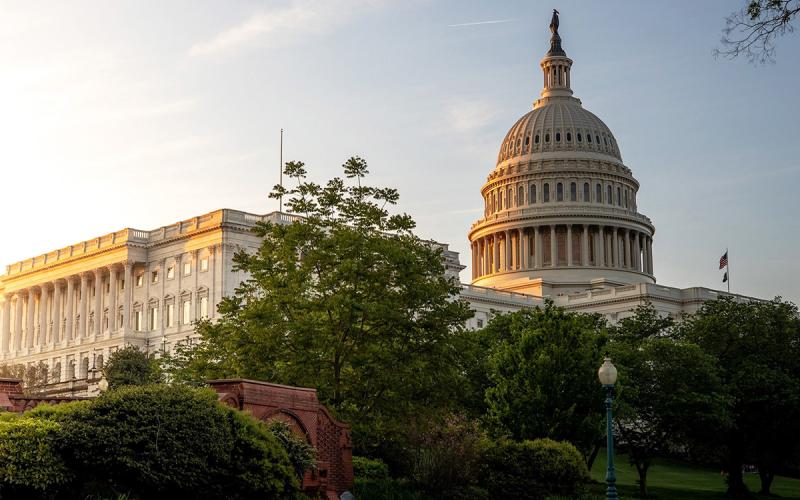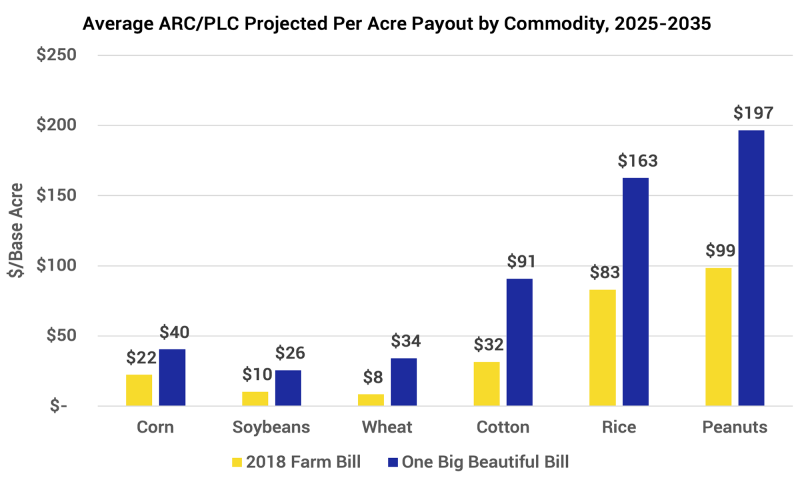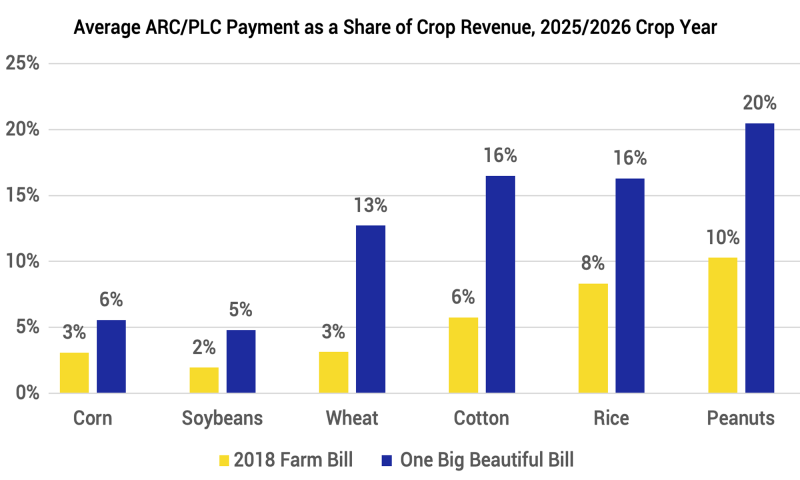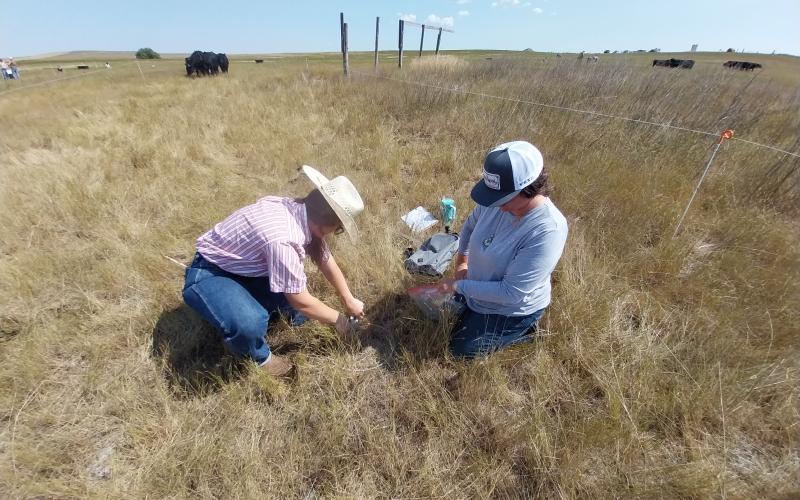
On July 4, 2025, the One Big Beautiful Bill Act was signed into law. The bill contains several changes to the Title I Commodity Programs, which will be discussed in detail below. Further analysis will be provided on the effect on crops in South Dakota and compared to crops grown in other regions in the United States.
Commodity Title Programs
The two main programs in the Commodity Title are the Agricultural Risk Coverage (ARC) and Price Loss Coverage (PLC) programs. Farmers opt to enroll in one of the shallow loss programs and receive direct government payments if specific conditions are met. Payments are based on the number of base acres a farm has enrolled, which represent the number of acres for which a farm is entitled to receive payment. The base acres are based on past planting history, not current planting decisions, so a farmer may receive base acre payments for a commodity that they are not currently growing on those acres. This can lead to disparities in payments between crops, as a farmer may have high base acres for crops that have high payouts and receive large payments, but may not even be planting that crop.
Payments are triggered for ARC when a farm’s actual revenue falls below a guarantee based on the historical data and market conditions. Payments are triggered for PLC when the effective price of the commodity falls below the set statutory reference price. Table 1 shows the statutory reference prices set by Congress in the 2018 Farm Bill and the new statutory reference price based on an increase provided in the One Big Beautiful Bill. The percentage change in the statutory reference price in commodity ranges from 11% for oats and barley to 21% for rice. Increasing the statutory reference price increases the probability that a payment is triggered and increases the size of the payments when they occur.
| 2018 Farm Bill | One Big Beautiful Bill | % Change | |
|---|---|---|---|
| Corn ($/bu) | 3.70 | 4.10 | 11% |
| Seed Cotton ($/lb) | 0.367 | 0.42 | 14% |
| Wheat ($/bu) | 5.50 | 6.35 | 15% |
| Peanuts($/ton) | 535 | 630 | 18% |
| Soybeans ($/bu) | 8.40 | 10 | 19% |
| Rice ($/cwt) | 14 | 16.90 | 21% |
Projected Payouts

Figure 1 shows the average projected payout for ARC and PLC for 2025- 2035. The yellow bars represent the average spending per acre, as stated in the 2018 Farm Bill text, using data from the Congressional Budget Office reports. The blue bars display the projected average payout per acre after the changes made in the One Big Beautiful Bill and based on a report provided by the University of Missouri Food and Agricultural Policy Research Institute.
The main commodities grown in South Dakota, on average, receive lower per-acre ARC and PLC payments compared to those grown in other regions, such as cotton, rice, and peanuts.
The changes from the One Big Beautiful Bill further exacerbate the disparities in payments between commodities. The disparities between commodity payments persist when adjusting the payments to the commodity's value.

Figure 2 shows the projected ARC/PLC assistance per acre as a share of the current crop value per acre. By adjusting the figure to represent a portion of the crop’s value instead of a per-acre number, we can see that certain commodities have a much higher percentage of their value paid through ARC/PLC payments than other commodities.
Conclusion
While row crop farmers in South Dakota may benefit from the increase in statutory reference price included in the One Big Beautiful Bill, the Bill further exacerbates the differences in payments between crops grown in South Dakota and crops grown in other regions of the United States. The average projected per-acre ARC/PLC payout for the next ten years for corn, soybeans, and wheat is two to seven times less than the average projected payouts for cotton, rice, and peanuts. That relationship holds when looking at the payout as a percentage of crop revenue, with ARC/PLC payouts representing 6% for corn, 5% for soybeans, and 13% for wheat, compared to 16% for cotton, 16% for rice, and 20% for peanuts.
References
- Congressional Budget Office. USDA Farm Programs Baseline Projections. January 2025.
- Food and Agricultural Policy Research Institute. Impacts of Selected Agricultural Provisions of the One Big Beautiful Bill Act. September 2025.
- Farm Service Agency. Agriculture Risk Coverage (ARC) and Price Loss Coverage (PLC).


